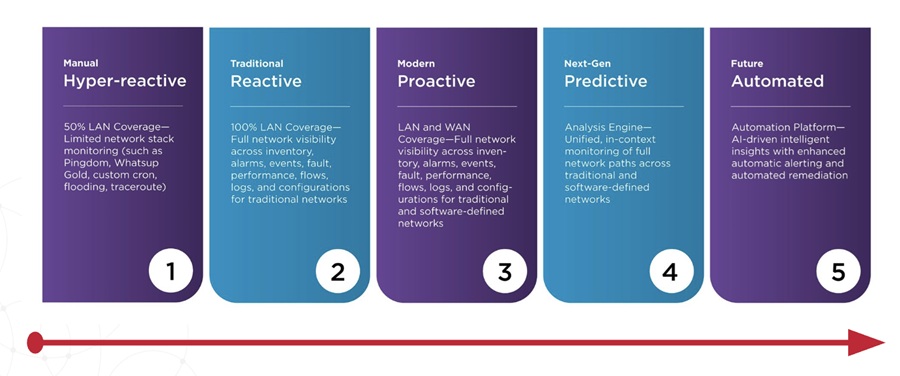
How do enterprises prepare for the future that our Cloud Vision 2020 survey forecasts? I see three immediate takeaways to focus on:
Start with: 3 Lessons About the Future of the Cloud
1. Visibility
You cannot manage what you cannot see. Yet, with your workloads split among on-premises, public, private and hybrid clouds, visibility is difficult to achieve.
Are your workloads available? Are they performing properly? Are you about to run out of a specific resource, such as storage? These are the kind of questions you need to answer to manage your computing fabric.
You need monitoring tools to do this, of course. If you're managing a diverse hybrid infrastructure, you need a monitoring partner that can handle the entire range of platforms — on-premises, public, private and hybrid cloud.
2. Build Your Staff's Skillsets
Think of the journey you are taking. Five years ago, most of your workloads were on-premises. Five years from now most will be in the cloud. That changes everything — your infrastructure, your management tools and how you develop applications.
While you are busy building this exciting new future, make sure you set aside time and money to train your staff for the key skills they'll need to help you get there. This includes how best to deploy and manage workloads in public clouds such as AWS, how to implement a successful DevOps culture, and how to deploy and manage the monitoring tools you'll need to keep everything running smoothly.
3. Choose Your Public Cloud Vendor Carefully
AWS has a commanding lead, but it is far from the only game in town. Start by taking stock of what you need from a cloud partner. Are you looking for public cloud service to provide a full development stack? Or is cloud just a place to stage data? Do a thorough inventory of what you need from a public cloud vendor and compare the major options. Amazon, Microsoft and Google are quite different, and there is no one-size-fits-all in public cloud. Investigate whether you want to jump fully into a cloud provider and take advantage of all their services (database-as-a-service, queuing systems, etc.), or try to remain cloud neutral, and use tools like Kubernetes to manage workloads — possibly even across multiple clouds.
Summary
Enterprises are in the middle of a massive transition, akin to a fourth industrial revolution. It's worthwhile to consider where you'll be in the near future and make plans to ensure you're prepared when you get there.


